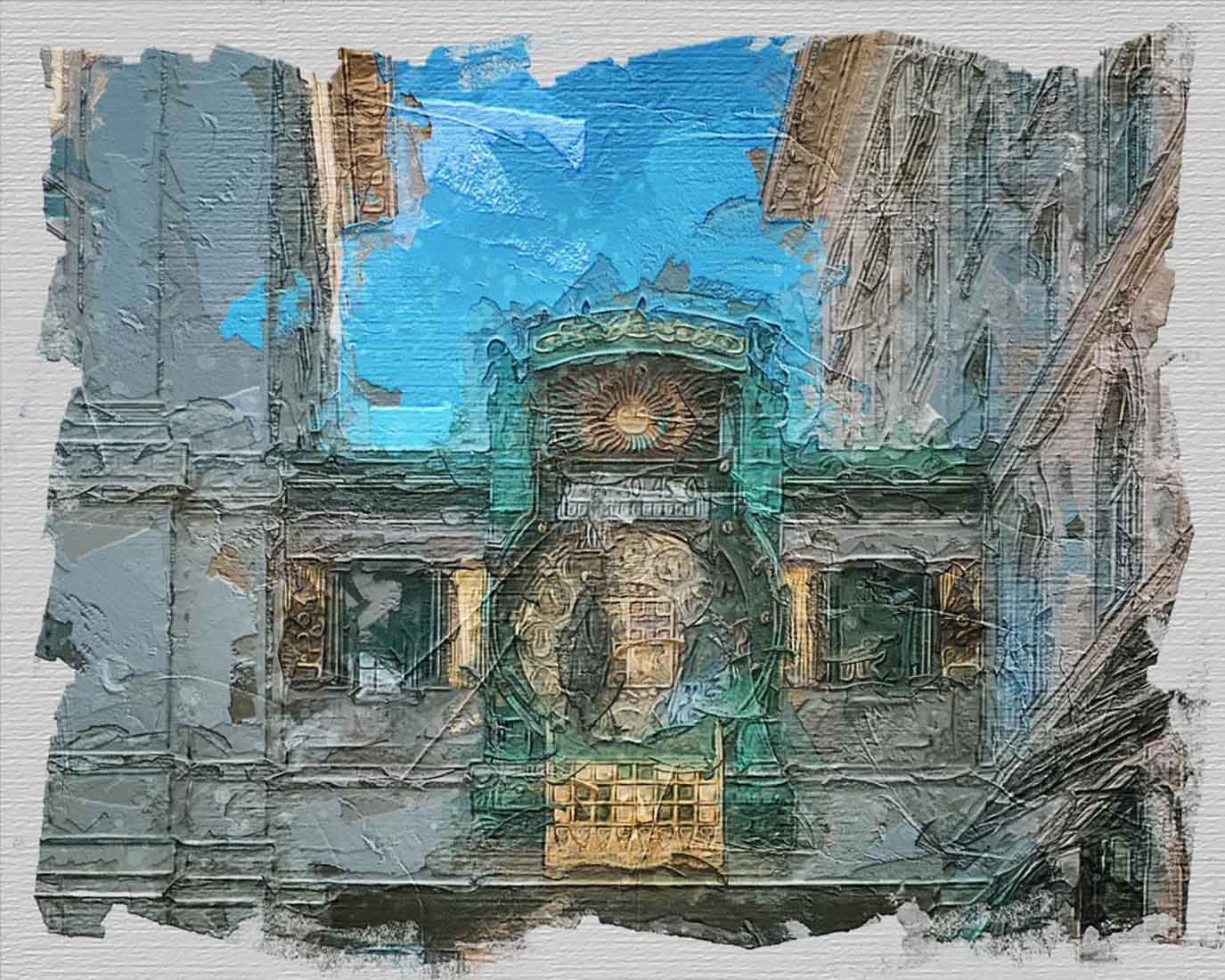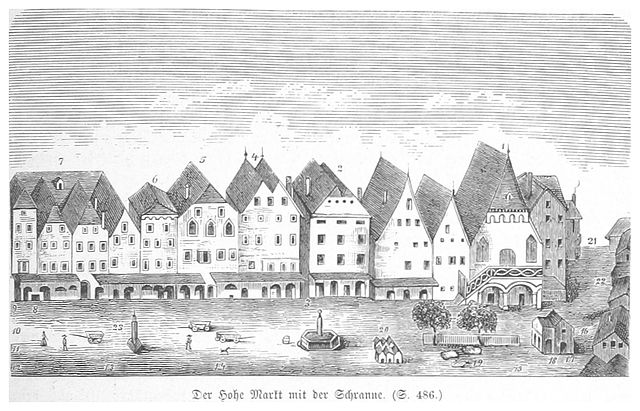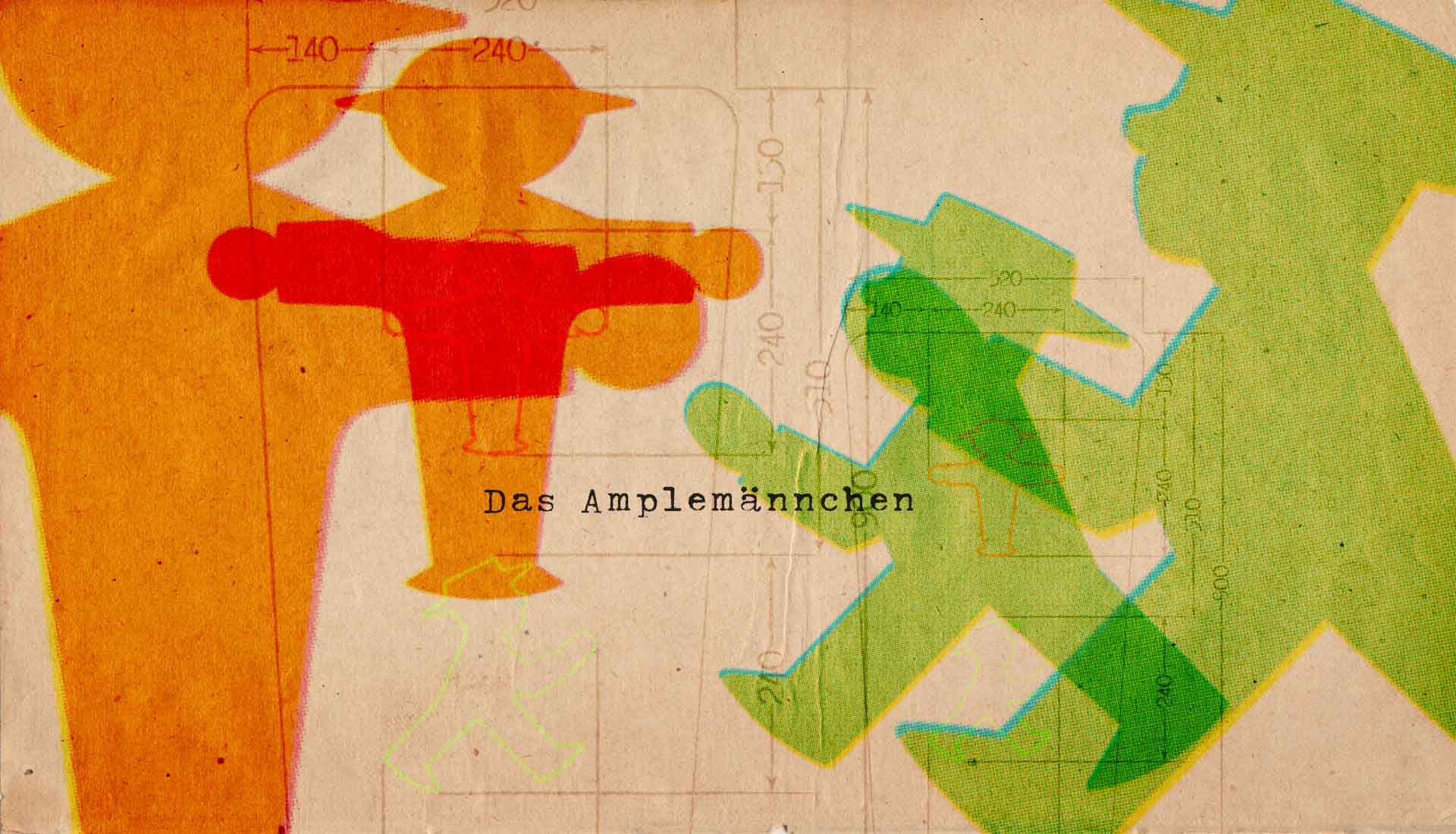eaving the Stephansplatz, we are heading back to the hotel for a short rest. Olaf is meeting some old school friends in the evening but he doesn't know where and when. We are both a little tired after the long travel day yesterday and the several hours of walking today. On the way, we pass the Hoher Markt.
The Hoher Markt Square is one of the oldest squares in Vienna. In fact – it even predates Vienna as it was part of the Roman army camp Vindobona (although nothing remains of Vindobona now). During the Middle Ages, this was one of the city’s most important market places. The name Hoher Markt literally means High (as in important) Market. Originally it was surrounded by guild houses and mainly dealt with food and textiles. From 1325 to 1839, the Vienna Criminal Court was located here and, until 1850, the Magistrate’s Civil Court as well as the site of a pillory and gallows. Currently, the area houses a monument, the Vermählungsbrunnen (Wedding Fountain), and a fabulous clock.
Elegant houses once lined the square but were destroyed during WWII and reconstruction was in the simple 1950s architectural style of the postwar period. It was during the reconstruction that the remains of Roman officers’ houses from Vindobona were discovered. Ultimately, only four buildings remained in the old style. High Market is also the site of the Vermählungsbrunnen (Marriage Fountain) – so named after the depicted scene of the marriage of Mary and Joseph – the marble fountain a replacement for the original 1706 wooden structure.

We happen across a group of people standing on the sidewalk. I ask Olaf the reason for the gathering – he says there is a really cool animated clock just up ahead. We stop for a few moments to watch. This is the Ankeruhr (Anchor Clock) named after the insurance company (Der Anker) that developed the plan to to have a large public clock erected at its new headquarters in 1911.
The insurance company moved into the building on June 29, 1914 and the Art Nouveau designed clock was scheduled for completion in the fall of 1914. Unfortunately, WWI caused shortages of materials and personnel delaying the completion of the clock. By the summer of 1915, the installation was completed and on August 18, 1915 – on the Emperor’s birthday – the first trial run took place in front of many spectators. A repeat of the spectacle occurred in 1916. The fabulous clock is the Ankeruhr (a large gilded clock in a local version of Art Nouveau). Each hour, a gilded representation of an historic figure appears, accompanied by organ music. At the stroke of noon, each of the twelve figures appear one by one and a tune to match the figure is played.
The clock was silent after only two test runs as it had been decided to define it as a “peace clock” and to start it only after the end of the war. The peace eventually arrived but carried with it the fall of the monarchy and, now no longer popular, some of the figures of the clock belonged to the House of Habsburg. Therefore, after the end of the war – the exact date is unknown – the clock was simply turned on without ceremony. In light of the political situation, the music program was changed from the imperial anthem to “The Creation.” During WWII, the clock was severely damaged by arson and could was not operational until 1956. Unfortunately, the organ could not be repaired and it was replaced by a sound system.
The show is over – we continue on.











